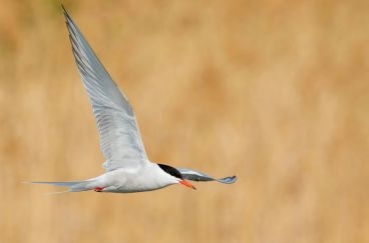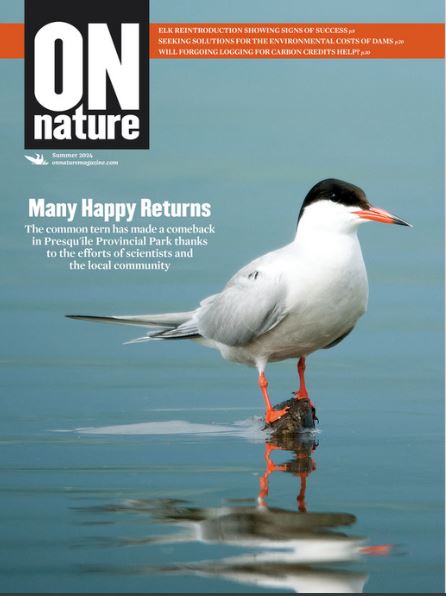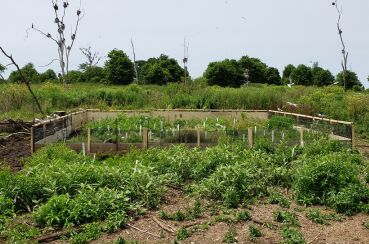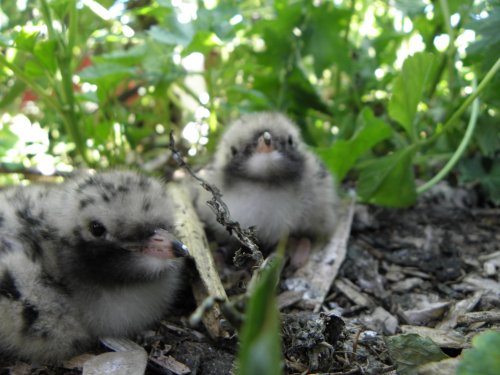
December 4, 2024
Phil McRae,
Grants Committee
The Friends of Presqu’ile Park
PO Box 1442, Brighton ON, K0K 1H0
Dear Phil,
Here we provide a report on our 2024 work with Common Terns at Presqu’ile Provincial Park. We thank the Friends for their continuing support of this project, specifically through a Research Grant in 2024. This work is making real differences for tern populations at Presqu’ile and across the region.
We presented the 2024 project results at the Great Lakes Area Working Group on Colonial Waterbirds, at Altmar, NY on November 12. The research and management successes that this work has enabled were also included in a cover article of the Summer 2024 issue of Ontario Nature, which highlighted the success of the predator exclusion grids we developed to protect Common Terns at Presqu’ile (https://onnaturemagazine.com/summer-2024.html).
Since 2014 these predator exclusion grids have helped restore breeding success to the Presqu’ile Common Tern colony by excluding habitual predation by Black-crowned Night Herons, breeding populations of which are also increasing at the park. This has made Presqu’ile attractive once more for prospecting Common Terns and nesting numbers have quadrupled in the last decade. Accordingly, more chicks have fledged from the colony since 2022 than in the whole of the previous decade.
In 2024, we worked collaboratively with the park to monitor tern populations and breeding success and implement management activities as required. We worked with the park as they added three more predator exclusion grids (increasing the total protected tern nesting area by 27% to almost 500 m2). We worked together to monitor all nests and eggs and band chicks at least twice weekly, and used cellular and remote trail cameras to maintain 24-h surveillance. We also continued our demographic study of adult terns. Not only has this study helped us to understand how immigration is playing a role in colony growth, it also allows us to keep track of the health and longevity of Presqu’ile’s birds and understand how recruitment is shaping breeding success and how Presqu’ile fits into the regional population. This helps to guide management to maximize reproductive output through placement and refinement of predator exclusion grids. During these activities, we also recaptured the oldest known-age tern at Presqu’ile, a 16-year old female who we banded as a chick in 2008 and has been breeding at the colony for over a decade. In 2024, we continued our comparative study examining diet through analyses of fecal samples at Presqu’ile and at other regional colonies. This will help us to understand the potential role of fish populations in the decline and restoration of Presqu’ile’s Common Terns and other regional colonies. We also gave a public lecture on the project at the Park in June as part of the NHE lecture series.

Common Terns once again nested in record numbers, breeding two weeks earlier than just five years ago. A peak number of 240 nests were recorded on 18 June – this was almost 2 weeks earlier than last years’ peak. In total, 281 nesting attempts were recorded, 16% more than in 2023. At the height of the season, 273 chicks were present within predator exclusion grids. Unfortunately, at the end of June, a week before many of these chicks fledged, a Black-crowned Night Heron infiltrated some of the grids and ate and killed tern chicks. This curtailed the breeding season for Common Terns which ended by mid-July.
Although infiltration of some of the grids by this single, persistent night heron prevented the year from being an unprecedented success, we estimate that between 169 and 207 Common Tern chicks successfully fledged and left Gull Island in 2024. This makes it the third best breeding season on record. We also trialed a few different approaches to deter this predator and have developed several modifications to exclude this individual, which appeared unusually determined to breach the grid protections.
We look forward to 2025, when many of a bumper cohort of chicks fledged at Presqu’ile in 2022 should return to breed. Through our trials in 2024 and discussions with colleagues this fall, we are confident that we can reinforce grid protections to facilitate continued colony growth and productivity, while minimizing the impact of this night heron.

Despite this slightly disappointing end to the 2024 season, we accept that there will always be challenges to overcome in future seasons that necessitate continual monitoring and adaptation of management. We are confident that our strong partnerships with the park and the Friends of Presqu’ile will continue and help us adapt the management as necessary for the restoration of this regionally important tern colony. This will further the conservation of Common Terns as breeders at Presqu’ile Provincial Park in the years to come and help preserve this species, which has been declining rapidly elsewhere in the region.
In 2024, Friends funds were used to contribute towards travel costs, expenses and equipment associated with the work described above. The generous support of the Friends of Presqu’ile was again acknowledged in various forums, including the 42nd Annual Meeting of the Great Lakes Area Working Group on Colonial Waterbirds, a public seminar for the Mengel Natural History Society, invited seminars at the University of Liverpool (UK) and Cornell University (USA), and in the cover article of the Ontario Nature magazine.
As always, we are thankful for The Friends’ support of Common Tern research and restoration at Presqu’ile. The Friends play a vital role in this and other conservation efforts at the park and we are privileged to be able to report on the success of this research program.
Sincerely,
Jennifer M. Arnold, Ph.D., Professor of Biology
Stephen Oswald, Ph. D., Faculty in Biology
Penn State Berks


